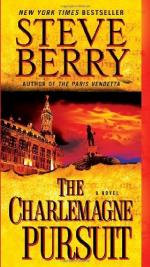|
This section contains 15,318 words (approx. 52 pages at 300 words per page) |

|
SOURCE: “The Emergence of Carolingian Latin Literature and the Court of Charlemagne (780-814)” in Carolingian Culture: Emulation and Innovation, edited by Rosamond McKitterick, Cambridge University Press, 1994, pp. 111-40.
In the following essay, Garrison considers factors that enabled the creation and survival of Carolingian verse. She also contrasts the perspectives of genteel coterie poetry, written by the court elite, with those of less-censured contemporary victory poems.
Inter caenandum aut aliquod acroama aut lectorem audiebat. Legabantur ei historiae et antiquorum res gestae.1
While dining he used to listen to some entertainment or to a reader; stories and the deeds of the ancients were read to him.
If history has traditionally belonged to those who tell the stories, or leave records, then literary history has, even more problematically, been the domain of those whose tales and poetry were written down and survived. For the early Middle Ages, the implications of this...
|
This section contains 15,318 words (approx. 52 pages at 300 words per page) |

|


